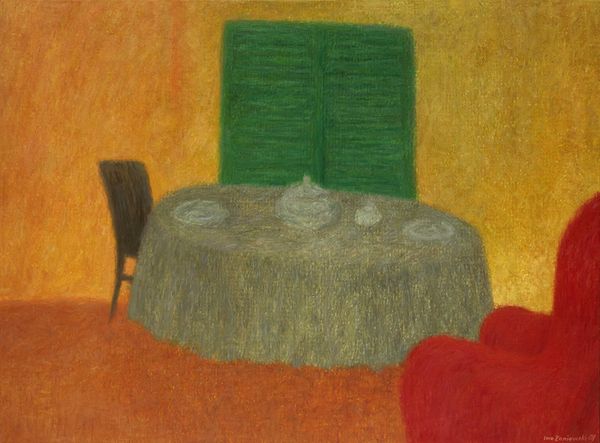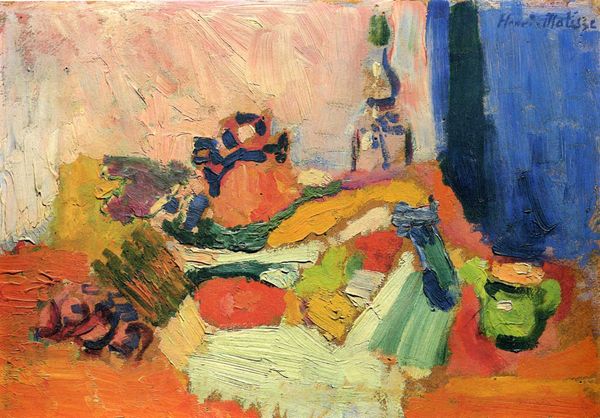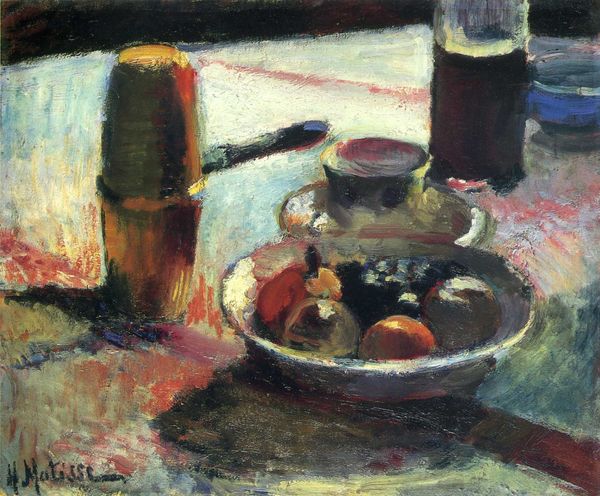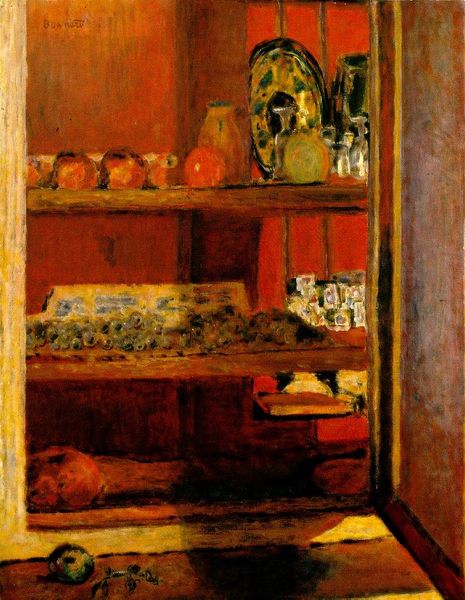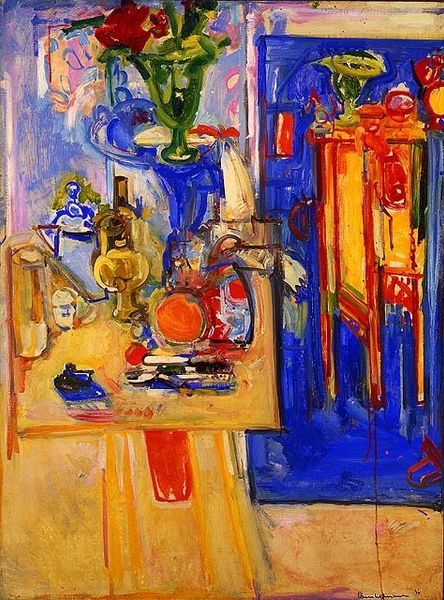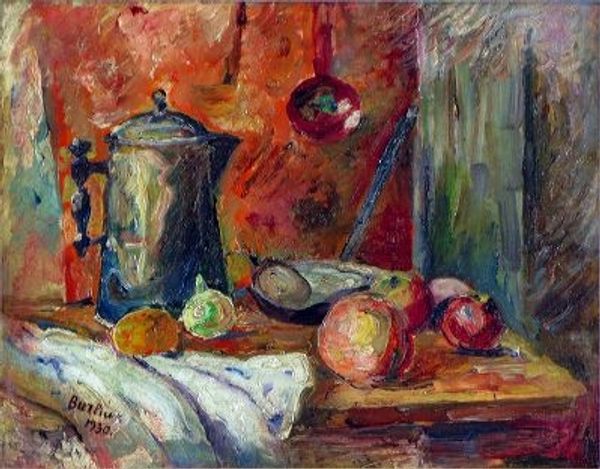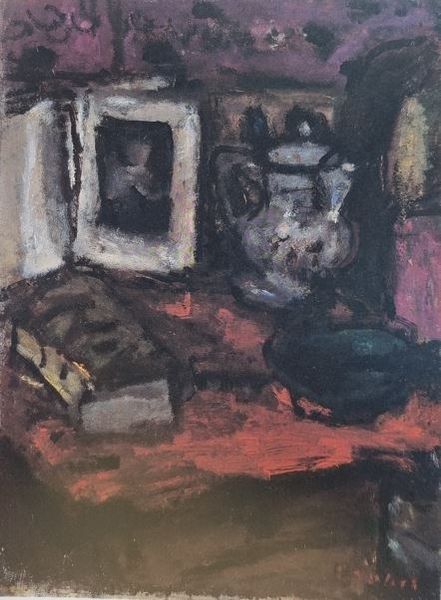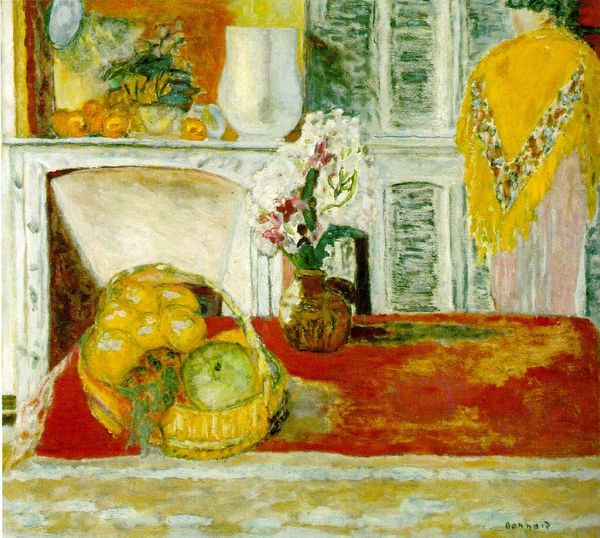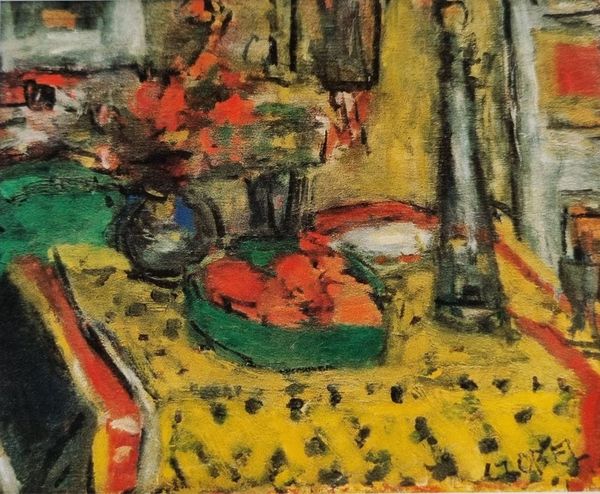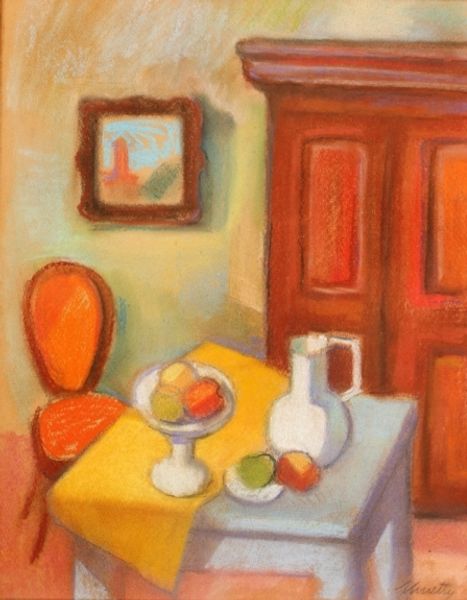
painting, oil-paint
#
painting
#
canvas painting
#
oil-paint
#
oil painting
#
intimism
#
modernism
Dimensions: 64 x 48 cm
Copyright: Public domain
Editor: Here we have Pierre Bonnard's "Fruit on the Red Carpet," painted in 1943, using oil on canvas. The bold use of red and the somewhat ambiguous space give it an intriguing tension, a domestic scene tinged with… something else. What do you see in this piece? Curator: The tension you sense speaks volumes about the cultural landscape of its creation. Bonnard painted this during World War II. Consider the significance of representing domestic intimacy and still life in a time of immense global conflict and social upheaval. Red, often associated with passion and vitality, could also symbolize the violence and bloodshed permeating Europe. Does the painting's presentation on canvas also strike you in any way? Editor: I didn't make the WWII connection, that gives the red a completely different dimension. The flatness of the canvas, the simplification of forms...does that relate to any contemporary anxieties or artistic movements? Curator: Absolutely. The Modernist movement, with which Bonnard is associated, was in full swing, questioning traditional representation and pushing the boundaries of art's purpose. Consider how abstraction and simplification can become powerful tools to express a collective sense of disorientation, and sometimes quiet protest, when direct expression might be suppressed or censored. This 'intimism' is, itself, a social and political act. What are your thoughts now on the role of the artist during wartime, seeing this in this context? Editor: Wow, reframing domestic life as a political statement, that's a profound thought. It almost makes the ordinary seem defiant. Curator: Precisely. Bonnard’s “Fruit on the Red Carpet” offers us more than just a pleasant still life. It encourages us to consider the quiet acts of resistance and the powerful statements artists can make through their choice of subject, color, and style during times of crisis. Editor: I'll definitely view art, and even simple images, in a completely different way after this. Curator: The point is seeing art AS history and society.
Comments
No comments
Be the first to comment and join the conversation on the ultimate creative platform.
